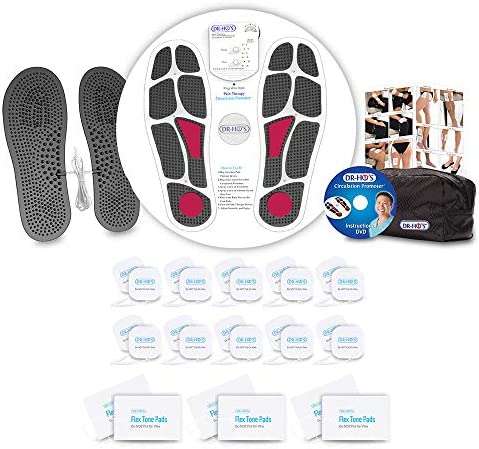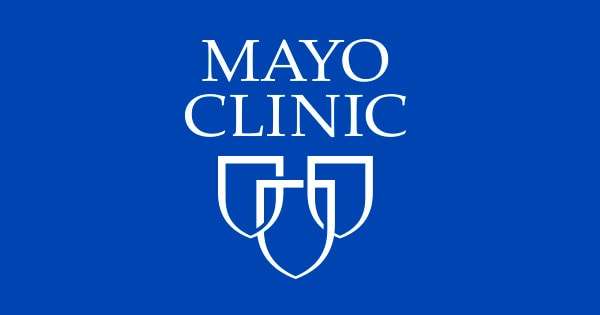Therapy and medication are the traditional treatments for borderline personality disorder (BPD). However, some people have started foregoing more traditional treatment options to manage BPD symptoms, and are now trying to learn how to treat BPD without medication. There’s increasing interest in using holistic and natural remedies, typically in conjunction with therapy, to treat their BPD.
Does it work? That depends on a number of things. Symptom severity, the type of therapy you use in addition to holistic methods, and how much support you have in your life all come into play.
It’s very important to keep in mind that holistic remedies aren’t right for everybody. They might not be as effective or work in the same way as other forms of treatment. As always, any effective treatment plan is best when used under the direction of a therapist or doctor, and keep in mind that the same plan may not work in the same way for everyone.
If you’re curious about how to treat BPD without medication, there are a few things you can try. We’re sharing some of the natural ways in which people treat borderline personality disorder. Read on to learn more.
1. Therapy
Psychotherapy (talk therapy) is almost always the first line of treatment for people who’ve received a BPD diagnosis. The most common and effective forms of BPD therapy include cognitive-behavioral therapy (CBT) and dialectical behavioral therapy (DBT). The latter was developed specifically to treat this mental health condition.
2. Vitamin C Supplements
Vitamin C supplements might be beneficial for people whose BPD symptoms include anxiety and nervous tension. One 2015 study found that taking 500 mg of vitamin C a day reduced anxiety in some people. If you’re looking for how to treat BPD naturally, vitamin C might be a good option to explore.
3. Herbs
Another way to learn how to treat BPD naturally involves herbs. Several herbs have shown promise as potential alternative treatments for borderline personality disorder.
Remember that herbs, like any other holistic treatment, can be most effective when used with other therapeutic methods. Never consider substituting herbs for all medication and/or therapy and make sure to consult with a licensed physician before starting to take any additional supplements.
Valerian root
Valerian root is a traditional natural remedy for insomnia, anxiety, and depression. This is due to the nature of the plant’s ability to interact with certain receptors that stimulate serotonin and GABA inhibitory neurotransmitters that can increase mood and calmness. Insomnia that’s left untreated can exacerbate symptoms of BPD, so this root might be helpful. Of course, anything that reduces anxiety and depression can be useful for a variety of conditions, including BPD.
Ashwagandha
Ashwagandha might be another option for people looking for ideas on how to treat BPD naturally.
Some research, although limited and inconclusive, may suggest that Ashwagandha can help with stress. It does this by moderating the hypothalamus-pituitary-adrenal axis. As such, this adaptogenic herb might be something to try as an alternative treatment to BPD.
4. Foods with Omega-3 Fatty Acids
Foods that contain Omega-3 fatty acids, like salmon, mackerel, and sardines, have shown promise as a borderline personality disorder treatment without medicine. In the study mentioned below, it helped diminish aggression and reduce the severity of depressive symptoms in women with BPD. Many people with mental health conditions, including those living with BPD, have lower levels of Omega-3 fatty acids. Adding this fatty acid back into the body has been shown effective for some people with BPD, according to a research study by McLean Hospital in Belmont, MA.
5. Magnesium
Magnesium supplements seem to be beneficial for some people with BPD who also suffer from migraines. Additionally, it’s believed that it can be beneficial for people who have depression or high anxiety in addition to BPD.
One 2015 study by a Russian research team found that people with BPD often have very low levels of magnesium. After administering supplements for a year, the team concluded that treating people with organic salts of magnesium ultimately improved their condition and largely reduced the need for some medication.
If you’re looking for a borderline personality disorder treatment without medication, you can ask your doctor to test your magnesium blood levels and see if it’s a viable option for you.
6. Vitamin D
Taking vitamin D supplements might be one of the more effective BPD alternative treatments out there. Approximately 50% of the global population is vitamin D deficient. Low vitamin D levels have been linked to increased anxiety, mood disorders, and depression.
Research shows that people deficient in vitamin D also are at higher risk for some mental illnesses like schizophrenia. For people with BPD, particularly those who suffer from anxiety and depression, doses of the sunshine vitamin might be effective in managing and lessening symptoms.
A 2018 study by researchers at St Mary’s College in Calgary concluded that higher vitamin D levels are clearly associated with improved depression and anxiety. Getting more vitamin D is an easy step to take as you embark on your journey trying to learn how to treat borderline personality disorder naturally.
In addition to oral supplements, you can get additional vitamin D through exposure to sunlight, by eating wild-caught salmon, and by drinking fortified milk or other products.
7. Chocolate or Cacao
If you want to know how to treat BPD naturally (and enjoyably), some research suggests you might just want to turn toward chocolate. Nutrients in chocolate may help reduce depression and improve memory and focus in people with BPD, things that are common problems.
Research conducted in a 2019 study found that chocolate might help reduce depression. Dark chocolate may be especially effective in combating depressive symptoms that are common in people with BPD.
Much more research must be done, but it’s exciting to think of the possibility that chocolate might be a viable way to treat borderline personality disorder treatment without medication.
8. Stress Management Skills
Believe it or not, there’s actually a difference between good and bad stress. Understanding how to identify each, and knowing how to manage the unhealthy type, can go a long way in treating BPD. Stress is a known and common trigger for BPD, so having the skills to manage stressful times in your life can be key in overall condition management.
“Healthy stress management skills are important. For example, meditation and breathing exercises can help activate our parasympathetic nervous system response, bringing our bodies out of “fight or flight” and into “rest and digest.” It only takes a few minutes and can support us in feeling more relaxed and safe.”
Talkspace therapist Kate Rosenblatt, MA, LPC, LMHC
When to Seek BPD Treatment
Even the best alternative treatments for borderline personality disorder are always going to be more effective when they’re used in conjunction with therapy.
Therapy is still viewed as the most beneficial way to treat the symptoms of BPD so you can live a full, rewarding life. That said, it doesn’t hurt to learn how to treat borderline personality disorder naturally with these therapist-approved methods.
“If you’re concerned about someone in your life, support them in getting the help they need, like working with a therapist who specializes in borderline personality disorder. Therapists can support you in finding what works for you to manage your symptoms. There is help out there for you.”
Talkspace therapist Kate Rosenblatt, MA, LPC, LMHC
When should you seek treatment? The short answer is if your symptoms are interfering with your everyday life, your relationships, and/or your job. Talkspace is an online therapy platform where you can find a therapist to help you manage your BPD symptoms. You can also find a therapist by asking your primary care physician, via an in-person or online support group, or through mental health websites like the National Alliance on Mental Illness (NAMI).
Medically reviewed by
Minkyung Chung
Minkyung Chung, MS, LMHC
Reviewed On: July 1, 2022
It’s possible to cope with borderline personality disorder in different, healthy and productive ways. Learn healthy coping strategies below.
Borderline personality disorder (BPD) is a mental health disorder affecting both the way someone thinks about themselves and other people.
Someone with borderline personality disorder might have relationships that are intense with a lot of ups and downs, as well as extreme emotions. Impulsiveness and alterations in self-image are also symptoms of borderline personality disorder.
Someone with BPD can have mood swings and problems with anger. They may also have a fear of being alone or abandoned.
Living with borderline personality disorder can be challenging, both for the individual and their loved ones. However, it’s possible to learn how to overcome borderline personality disorder.
With the appropriate professional treatment, self-help and coping mechanisms, it’s possible to live a fulfilling and productive life with borderline personality disorder.
Article at a Glance:
- BPD is a mental health disorder that affects how people see themselves and others.
- People with BPD can benefit by being physically active, practicing self-care, keeping busy, and taking breaks.
- Dialectical behavioral therapy and group/individual therapy can help someone deal with BPD.
- Grounding exercises and having an emergency safety plan are recommendations to overcome BPD.
- Medication can be used to help a person overcome BPD.
Coping With Borderline Personality Disorder
Living and coping with borderline personality disorder is an individual experience. Patients should take time to find what works for them. It can be different for everyone, but living with borderline personality disorder can be made easier by:
- Engaging in physical activity. If you’re having trouble coping with BPD, physical activity may help you regain control over your emotions and stabilize yourself. Activities like boxing, running, cycling or yoga might be helpful.
- Taking time for yourself. While social isolation can be detrimental, taking occasional time away from other people can be a good coping skill for BPD. Take the time to be alone, and recharge without the influence of other people. If you are feeling angry or out of control with your emotions, reflecting solo can help you readjust.
- Writing letters or emails to people but never sending them. This is kind of like a journal, and a great release to get out some feelings and start to calm down. By typing or writing out what you feel toward a person or situation, you can express yourself without having your words impact your relationships. By not sending the message, you allow yourself time to reflect and reread what you wrote after the initial feelings have passed.
- Taking breaks. Temporarily removing yourself from a stressful situation can help alleviate feelings of anger and aggression.
- Keeping busy. Do something to distract from your current emotions. Holding a small toy like a slinky or item can keep your hands occupied so your mind can focus on the specific task at hand.
5 Tips for Getting the Most Out of BPD Treatment
Psychotherapy, also known as talk therapy, is the primary treatment approach for borderline personality disorder. Talk therapy for BPD focuses on improving functionality, managing emotions and reducing impulsiveness.
Dialectical behavior therapy (DBT) is one approach used for the treatment of BPD. The combination of group and individual therapy is included in DBT. Patients learn skills that are meant to help them manage their emotions, deal with stress and improve relationships.
Teletherapy and online counseling may also be a treatment option for BPD.
Currently there are no drugs approved by the Food and Drug Administration (FDA) specifically for BPD. Medications may still be prescribed to help with specific symptoms or co-occurring mental health disorders. Medications that someone with BPD may benefit from include antidepressants and mood stabilizers.
A clinical plan for BPD may be the first step toward active treatment, but there are many other steps you can take to manage BPD:
1. Be an Active Part of Your Treatment Plan
Borderline personality disorder does require treatment, and you should work on being active, engaged participant in whatever the program is. As you learns more, you’ll be more empowered to ask relevant questions, make suggestions and be open and honest with treatment providers. No one treatment plan works for everyone with BPD. It can take time to get it right.
2. Try Grounding Exercises
Using grounding exercises can help you learn to deal with borderline personality symptoms. The objective of grounding exercises is to help you put you attention on what’s happening in the present. The goal is to think about the present instead of what happened in the past or what could happen in the future.
Different types of grounding exercises include:
- Visual and auditory grounding exercises. Visual and auditory exercises use senses to bring you back to the present. In visual exercises, take a breath and look around. Think about everything that you see. Try to notice even small details. The same thing can be done using an auditory exercise — do the same steps as a visual grounding exercise but with sounds. Try to notice even the smallest sounds and the differences between those sounds. What’s good about visual and auditory grounding is that you can do it anywhere and the people around you probably won’t even notice.
- Tactile grounding exercises. Tactile grounding exercise are ways to bring yourself into the present through the sense of touch. Again, there are many different ways to put this into action. For example, taking a cold shower can be helpful. Wearing a rubber band around your wrist and snapping it lightly might help you become present.
- Listening to a meditation app. There are a variety of meditation apps that can help center your mind and bring you back into a clearer headspace. Search through apps on your phone or computer to find the best fit for you. Spending just a few minutes a day with a guided meditation app can help you stay focused.
- Use of essential oils. When you’re feeling like you’re having a dissociative experience or symptoms of BPD, using essential oils for aromatherapy can help you stay present and feel calm. Look for scents like lavender or chamomile
- Breathing exercises. Learn to breathe very slowly in through the nose and fill the lungs until it feels like the lungs can’t take in more air. Then, exhale the air out of the lungs completely through the mouth. Repeat and focus on how it feels to have the lungs expand and then contract.
You can explore different grounding exercises until you find what works for you.
3. Have an Emergency Safety Plan
One of the most challenging parts of BPD can be the emotional pain you experience. This can lead to mental health emergencies. You might have suicidal thoughts or behaviors, for example. When you are feeling clear-headed and in a good place, create an emergency safety plan. Outline what you will do if you feel you could be a harm to yourself or someone else.
Create a specific plan, because when you are in the midst of a potentially harmful situation, you might not think as clearly as when you created the plan.
4. Get Support
If you have BPD, you might tend to isolate yourself. This isolation could be because you struggle with relationships or because you fear judgment. It’s critical to have a social support network you can rely on and trust like friends or family.
Think about joining a support group for other people who have BPD as a way to develop relationships.
5. Practice Self-Care
Physical and mental health are intrinsically linked to one another. Being physically healthy can help you better manage your BPD as well. Self-care includes a healthy diet, exercise and getting enough sleep. Find ways to relax and reduce stress that are enjoyable. You can create a schedule and routine that integrates time for those things that are enjoyable.
Overcoming BPD Without Medication
Overcoming BPD without medication is possible, but you should always follow the guidance and treatment plan set forth by your doctor or health care provider. Medication isn’t necessarily the primary treatment for BPD in most cases. It’s typically only used to treat specific symptoms such as depression or mood swings.
Regardless of whether or not you take medication for BPD, you can learn coping skills and healthy ways to live life without having the disorder and its symptoms define you.
It’s important to find strategies that work for you and to shift your thinking from negative to positive. You might also want to speak openly with loved ones about your needs. For example, help loved ones understand how to help you when you become angry or very emotional. The loved ones likely want to help you and be supportive, but they may not know how.
Dealing With BPD and Co-Occurring Substance Abuse
Borderline personality disorder often occurs along with substance abuse. This is likely because people with BPD may turn to substances as a way to self-medicate. To learn more about treatment for substance use and co-occurring disorders like BPD, contact The Recovery Village. Call and speak with a representative to determine which treatment program could work for you.
Related: Starting Treatment Online with Teletherapy

Medically Reviewed By – Dr. Kevin Wandler, MD
Kevin Wandler holds multiple positions at Advanced Recovery Systems. In addition to being the founding and chief medical director at Advanced Recovery Systems, he is also the medical director at The Recovery Village Ridgefield and at The Recovery Village Palmer Lake. Read more
Sources
NIH National Institute of Mental Health. “Borderline Personality Disorder.” Accessed January 17, 2019.
Smith, Melinda, Robinson, Lawrence and Segal, Jeanne, Ph.D. “Helping Someone with Borderline Personality Disorder.” HelpGuide. November 2018. Accessed January 17, 2018.
Medical Disclaimer
The Recovery Village aims to improve the quality of life for people struggling with substance use or mental health disorder with fact-based content about the nature of behavioral health conditions, treatment options and their related outcomes. We publish material that is researched, cited, edited and reviewed by licensed medical professionals. The information we provide is not intended to be a substitute for professional medical advice, diagnosis or treatment. It should not be used in place of the advice of your physician or other qualified healthcare providers.



